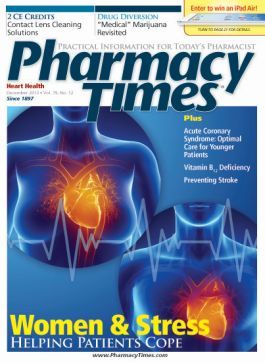Patient-Centered Care: Give Patients a Shovel
With the New Year approaching, let's resolve to decrease some of the difficulty with anticoagulant medications by welcoming patients and technology into the patient counseling dialogue.

Over the past year, I’ve written about the cumbersome, often complex, and potentially dangerous nature of anticoagulant medications. With the New Year approaching, I propose that we resolve to decrease some of the difficulty by welcoming patients and technology into the patient counseling dialogue.
At the end of health care is patient care. While patients have been drivers for improvements in the health care “system”—in practice, quality, and delivery—it wasn’t until recently that we considered placing patients at the center of their own care. The Institute of Medicine’s reports “To Err Is Human: Building a Safer Health System,” “Crossing the Quality Chasm,” and most recently “Population Health Implications of the Affordable Care Act” have revealed a paradigm shift, and the recognition that patient-centered care and interoperability of health systems may lead to the transparency necessary to achieve meaningful and value-based care.1,2
In 2009, the Health Information Technology for Economic and Clinical Health Act (HITECH) was enacted to promote and expand the adoption of health information technology.3 This meant improved health information exchange and thus better health care quality, safety, and efficiency. It also laid the groundwork for patients to become more proactive in their care via online patient portals and personal health records (PHRs), whereby patients have the opportunity to record and maintain information related to their health and to communicate with their primary caregivers and/or care team.
Technology is only as good as what you put into it—that is, garbage in begets garbage out. Eighty percent of medical errors began with miscommunication, missing or incorrect information about patients, or lack of access to patient records. There is certainly room for improvement.4 In alignment with preventing adverse drug events, patient-assisted medication reconciliation via patient portals and PHR responsibilities may be a start.
According to H. Edward Hanway, chairman and chief executive officer, CIGNA Corporation, “Individuals can and will make higher-quality health care decisions when given the education, motivation, and opportunity to do so ... personal responsibility and accountability, coupled with strong health advocacy and readily accessible cost and quality information, can make all the difference in reducing health care costs and improving quality of care.”
So what does this have to do with patient counseling? Patient counseling has become a bit trickier these days. With more Google searches for health information than doctor’s visits, it is difficult to be the primary source for appropriate disease management and medication adherence.5 Some health care providers view this as defiance since they want to be the primary source of consultation, while patients view this as research and patient engagement.
I recently had the good fortune of listening to the patient-centered perspective of Dave deBronkart, aka “e-Patient Dave.” In 2009, HealthLeaders magazine recognized him as one of the 20 most influential people who make health care better. He noted that patients are to be equipped, engaged, empowered, and enabled to participate in their care. He issued a challenge to rebalance the patient—physician dynamic in light of technologic resources and access to care via the new information ecosystem. “It’s perverse to keep people in the dark and call them ignorant,” he said.
This works both ways, for patients and clinicians, alike. In my experience, communication is a 2-way street and patients don’t require being spoken to, but spoken with—in an engaging manner that captures their daily routines, eating habits, and other potential barriers to adherence. This is especially true for education surrounding potentially complex and dangerous medications, including warfarin.
A decreased burden on an already overwhelmed health care “system” begins and ends with the patient. Participatory medicine via technology is the future state-of-the-art. We have more tools and resources now than ever, and because of the Web, people can connect to information quickly, so we must reevaluate our methods of patient engagement and counseling. Technology and telehealth provide the platform to enforce patient education and more accessible health care. We ought to view these tools as segues for further advancement of health care, and not as hindrances. As e-Patient Dave says, “When a patient wants to help, give them a shovel.”
Dr. Stevens is an advanced practice anticoagulation pharmacist for the Partners Healthcare System and an adjunct clinical assistant professor of pharmacy at Northeastern University’s BouveÌ College of Health Sciences in Boston, MA. This column’s information is based on current studies but may be updated without notice with newer studies or with different populations.
References
- Leavitt MO. Building a value-based health care system. Paper presented April 2008; Washington, DC.
- The Leapfrog Group. The purchaser guide to value-driven health care. www.leapfroggroup.org/media/file/Employer_Purchaser_Guide_05_11_07.pdf. Accessed November 11, 2013.
- US Department of Health and Human Services archives. http://wayback.archive-it.org/3909/20130927155638/http:/www.hhs.gov/recovery. Accessed November 11, 2013.
- Woolf SH, Kuzel AJ, Dovey SM, et al. A string of mistakes: the importance of cascade analysis in describing, counting, and preventing medical errors. Ann Fam Med. 2004;2:317-326.
- Pew Research Center for the People and the Press. 2002. Pew Internet and American Life Project. http://pewinternet.org/Reports/2002/Search-Engines/Data-Memo.aspx. Published July 3, 2002. Accessed November 11, 2013.

